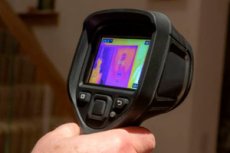
发表在《英国医学杂志》 (BMJ)健康与护理信息学杂志上的一项研究发现,面部热成像与人工智能 (AI) 的结合可以准确预测冠状动脉疾病 (CAD)。研究人员表示,这种非侵入式实时方法比传统方法更有效,如果在更大、种族更多样化的患者群体中进行测试,则可以在临床实践中实施,以提高诊断准确性和工作流程。
研究人员表示,目前诊断冠状动脉疾病的指南依赖于风险因素概率,但这些概率并不总是准确或广泛适用。研究人员补充说,虽然这些方法可以辅以其他诊断工具,例如心电图、血管造影和血液检查,但它们通常耗时且具有侵入性。
热成像技术通过检测红外辐射来记录物体表面温度的分布和变化,是一种非侵入式技术。它已被证明是一种很有前景的疾病评估工具,因为它可以根据皮肤温度模式识别血液循环异常和炎症区域。
机器学习 (AI) 技术的出现及其提取、处理和整合复杂信息的能力可以提高热成像诊断的准确性和效率。
研究人员着手研究将热成像与人工智能相结合,在460名疑似心脏病患者中准确预测冠状动脉疾病的可能性,而无需采用侵入性且耗时的方法。这些患者的平均年龄为58岁;其中126人(27.5%)为女性。
在确认检查之前拍摄了他们的面部热图像,以开发和验证用于检测冠状动脉疾病的人工智能辅助成像模型。
共有 322 名参与者(70%)确诊患有冠心病。这些人通常年龄较大,且男性居多。他们也更有可能存在生活方式、临床和生化风险因素,并且更频繁地使用预防性药物。
与使用传统风险因素和临床体征及症状进行风险预评估相比,使用热成像和人工智能的方法在预测冠心病方面大约高出13%。在三个最重要的热指标中,面部左右两侧的整体温差影响最大,其次是面部最高温度和面部平均温度。
具体来说,左下颌区域的平均温度是最强的预测因素,其次是右眼区域的温度差异和左右太阳穴之间的温度差异。
该方法还有效地识别了冠心病的传统风险因素:高胆固醇、男性、吸烟、超重(BMI)、空腹血糖和炎症指标。
研究人员承认,他们的研究样本量相对较小,并且仅在一个中心进行。此外,所有研究参与者如果被怀疑患有心脏病,都会被转诊进行确认性检查。
然而,研究小组写道:“[热成像]预测[冠状动脉疾病]的能力表明未来有潜在的应用和研究机会......作为评估健康的生物生理方法,[它]提供了超越传统临床测量的疾病相关信息,这可能会改善对[动脉粥样硬化性心血管疾病]和相关慢性病的评估。”
“其非接触式、实时性的特点使得在护理点进行即时疾病评估成为可能,从而简化临床工作流程,为医生和患者做出重要决策节省时间。它还具有进行大规模预筛查的潜力。”
研究人员得出结论:“与目前传统的临床工具相比,我们基于先进的[机器学习]技术开发的[热成像]预测模型显示出良好的潜力。”
“需要进行涉及更多患者和不同人群的进一步研究,以证实当前研究结果的外部有效性和普遍性。”

